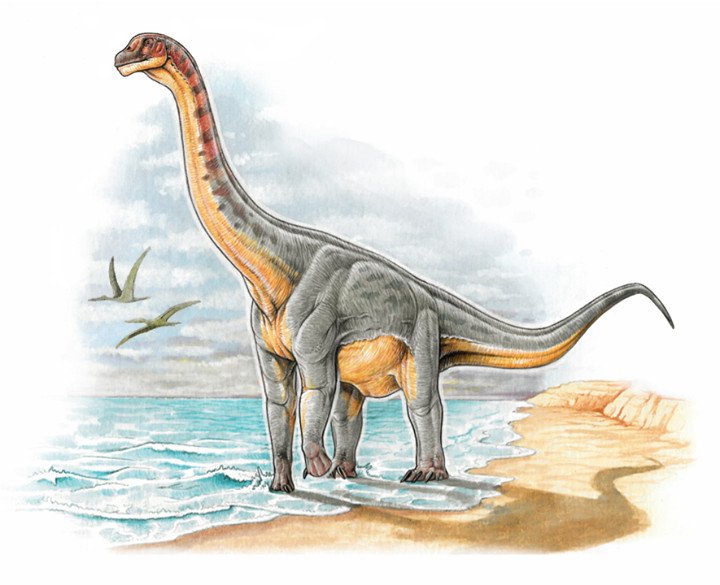Important discovery between Colombian and Argentinian paleontologists gives a better understanding of the spatial and temporal distribution of large herbivorous dinosaurs.
This is the first species of Colombian dinosaur to be described. Padillasaurus leivaensis, as paleontologists named it, belonged to the family of brachiosauridaes, one of the groups of large herbivorous dinosaurs with long necks that characterized most of the Mesozoic Era.
This giant lived in northwestern Gondwana, the supercontinent that included South America, Antarctica, Africa, India and Oceania during the Early Cretaceous, about 130 million years ago, when it was believed that brachiosauridaes were already extinct in that area. According to Diego Pol, a MEF paleontologist, this new discovery not only provides insights into the evolutionary history of herbivorous dinosaurs in general, but also helps to understand how they were distributed in the world, because until now not much was known about dinosaurs that lived in tropical areas.
The discovery was made in Villa de Leyva in Colombia, where the team rescued part of the backbone of this giant. With these data, is estimated that Padillasaurus measured about 16 meters long and weighed approximately 10,000 Kg. Thanks to the reconstruction made by the artist Gabriel Lio, we can imagine how this dinosaur was alive.

The study of the discovery of paleontologists Jose Luis Carballido (CONICET-MEF) and Diego Pol (CONICET-MEF), along with other Colombian CIP researchers (Paleontological Research Center of Colombia), the National University of Colombia and the Colombian National Geological Service; was just published in the latest edition of a major magazine called Journal of Vertebrate Paleontology.
This research was conducted within the framework of the CIP’s cooperation agreements with MEF and CONICET, in order to investigate the distant past of life in northern SouthAmerica.